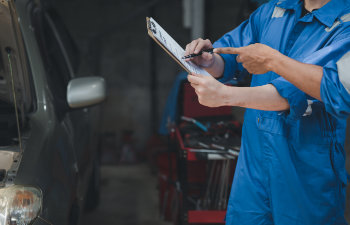
With the advancement of technology, contemporary vehicles are now furnished with an array of driver-assistance features aimed at enhancing the safety and comfort of our driving experience. The National Highway Traffic Safety Administration affirms that “Driver assistance technologies hold the potential to reduce traffic crashes and save thousands of lives each year.”
However, these sophisticated features present a considerable challenge in car repair and maintenance. The increasing presence of sensors, cameras and other electronic components in modern vehicles has made repairs more intricate, necessitating specialized expertise.
Moreover, even a small error during a repair can result in serious outcomes such as accidents, system malfunctions and diminished vehicle value.
Common Driver-Assistance Repair Mistakes
Wreck Check Atlanta has dealt with these common driver-assistance technology repair mistakes and their resulting impact on your car’s value.
Misaligned Sensors and Cameras
Driver-assist systems heavily rely on sensors and cameras for accurate information about the vehicle’s surroundings. If these components are misaligned during repair, they can provide incorrect data, resulting in false alarms or malfunctions. For instance, if the front-facing camera controlling the emergency braking system is misaligned, it may fail to detect obstacles, potentially leading to a collision.
Improper System Calibration
It’s important to remember that driver-assistance systems need precise calibration to work effectively. Calibration ensures that the sensors and cameras are accurately aligned and that the system responds correctly to various driving conditions.
If a repair technician doesn’t calibrate the systems properly, the driver-assistance technology may not function as intended, which can lead to safety concerns and reduced value.
Using Non-OEM Parts
Modern vehicles are equipped with proprietary parts that are specifically designed to interact with the car’s driver-assistance technology. If non-OEM parts are used during a repair, it can compromise the system’s performance and potentially lead to safety issues.
For instance, if a non-OEM camera replaces a damaged one, it may not offer the same level of accuracy as the original camera, which could result in false alarms or system malfunctions.
Failure to Update Software
Driver assistance systems depend on software to operate effectively. Regular software updates are crucial to prevent outdated systems from providing inaccurate information or failing to respond properly to various driving conditions.
For instance, if the software controlling the adaptive cruise control system is not updated, it might not react appropriately to shifts in traffic patterns, potentially increasing the risk of accidents.
Post-Repair Inspection from Wreck Check Atlanta
Driver-assistance technology represents a remarkable leap forward in the automotive industry. These systems are designed to enhance safety and driving experience, but they require specific expertise and meticulous care when it comes to repairs and maintenance. Failing to address these requirements can not only compromise the proper functioning of the technology but also pose safety risks and potentially diminish the value of the vehicle.
If you’re a vehicle owner who is concerned about the proper functioning of driver-assistance technology after repairs, it’s crucial to contact Wreck Check Atlanta. Our post-repair inspection process can provide the assurance and peace of mind you need regarding the functionality of your car’s advanced safety systems.
Posted on behalf of

